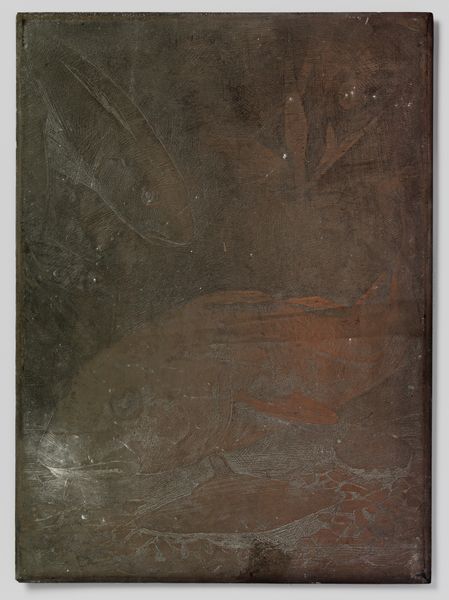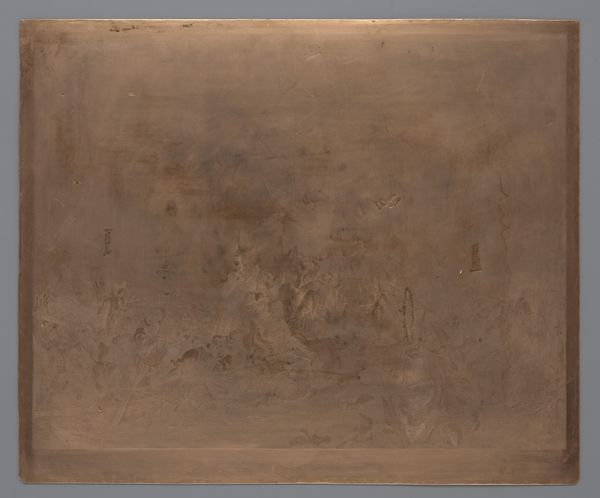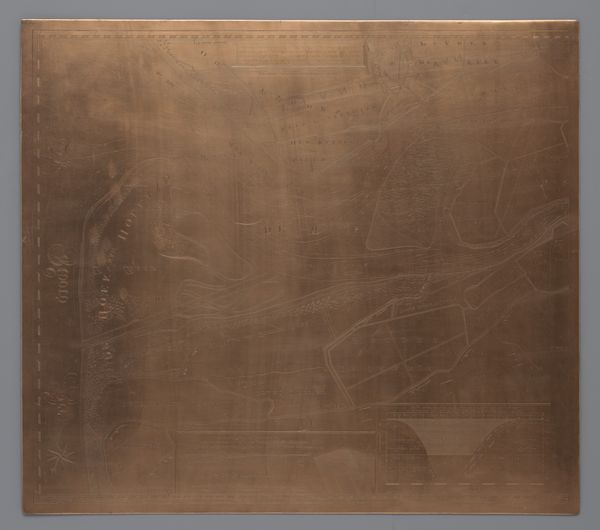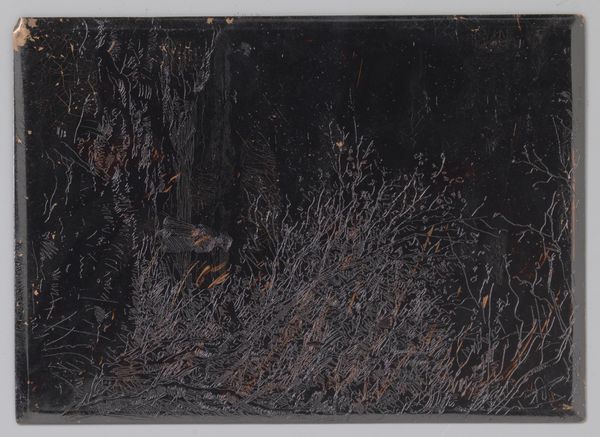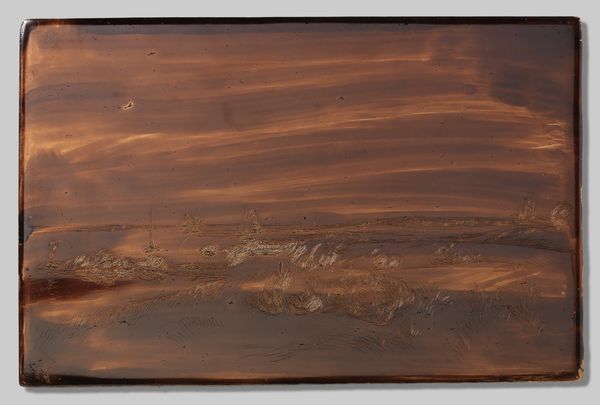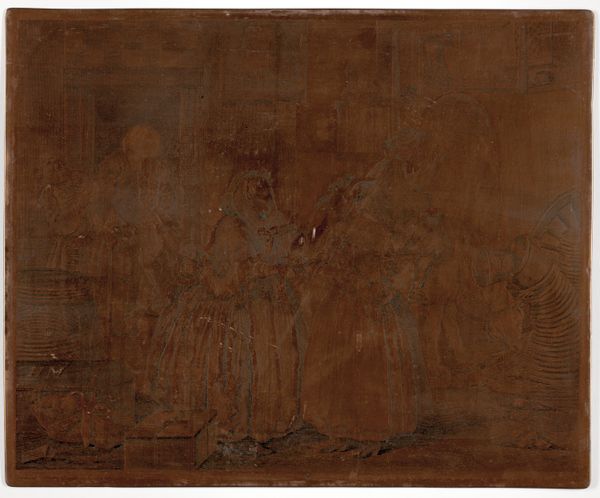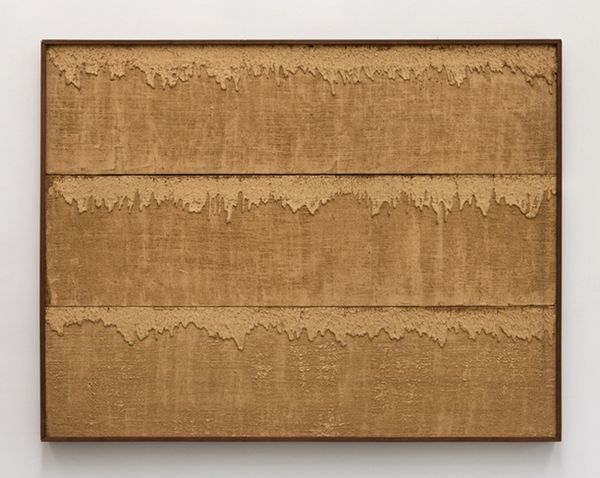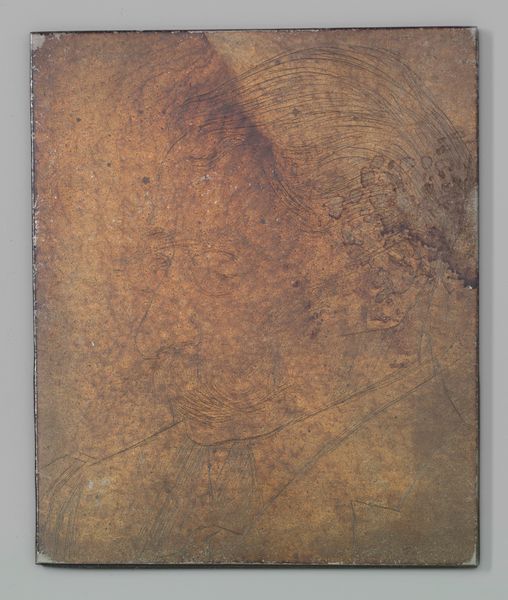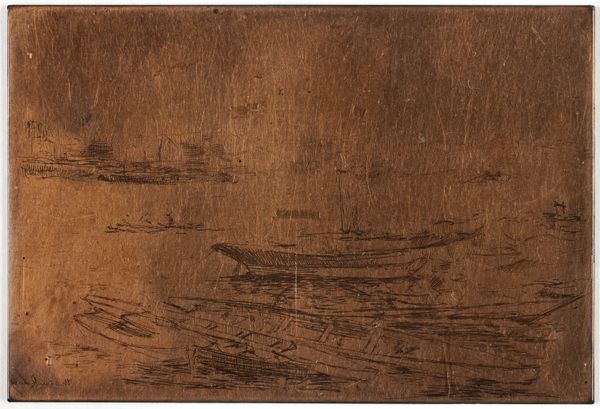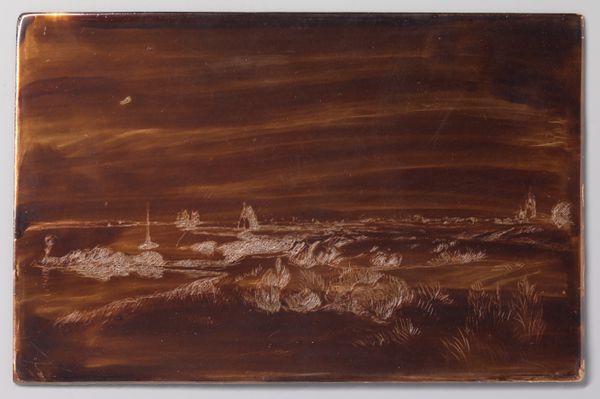
Printing plate for The Tempest (Le Tempête) 1870 - 1875
0:00
0:00
graphic-art, print, metal, etching, engraving
#
graphic-art
#
toned paper
#
narrative-art
# print
#
metal
#
etching
#
france
#
wooden texture
#
engraving
Dimensions: 4 7/8 x 6 3/4 in. (12.38 x 17.15 cm) (image)5 15/16 x 7 3/4 in. (15.08 x 19.69 cm)
Copyright: Public Domain
This printing plate for *The Tempest*, made by Charles Amand-Durand, invites us to consider the cultural fascination with Shakespeare's themes during the 17th century. This copper plate is more than a means of reproduction; it embodies the complex social structures mirrored in Shakespeare's play. *The Tempest* explores themes of colonialism, justice, and power, all of which were intensely relevant in the 17th century, as European powers expanded their reach across the globe. The character of Caliban, a native of the island, has often been interpreted as a symbol of the colonized, reflecting the era's discourse on race and civilization. Through this lens, the plate embodies a story of exploitation and cultural disruption. Consider the weight of these narratives and how they continue to shape our understanding of identity and history.
Comments
minneapolisinstituteofart almost 2 years ago
⋮
In the 1860s, Charles Amand-Durand perfected the process of heliogravure to produce extremely accurate facsimile reproductions of old master prints. At that time, Georges Duplessis (1834–1899) was the curator of prints at the Bibliothèque Nationale, and the two collaborated on a series of publications intended to disseminate images of outstanding prints that had grown too rare to be familiar to a broad audience. Duplessis selected the prints, and Amand-Durand provided the facsimiles. The present plate was probably made in connection with the publication "Eaux-fortes de Claude Lorrain" (Paris, 1875), and is based on Claude Lorrain's earliest dated etching, The Tempest, of 1630. Surrounded by rough seas, several boats are crowded—perhaps tossed—against a mostly overgrown rocky promontory featuring a crenellated tower. In the foreground, figures use a small boat to seek the safety of shore and to salvage some of their cargo. Claude's 17th-century biographer, Filippo Baldinucci, recounts that the artist experienced severe storms at sea while en route from Lorrain to Rome in 1627. Though Claude is primarily known for his pastoral landscapes, stormy seas became a recurring theme in his work.
Join the conversation
Join millions of artists and users on Artera today and experience the ultimate creative platform.
